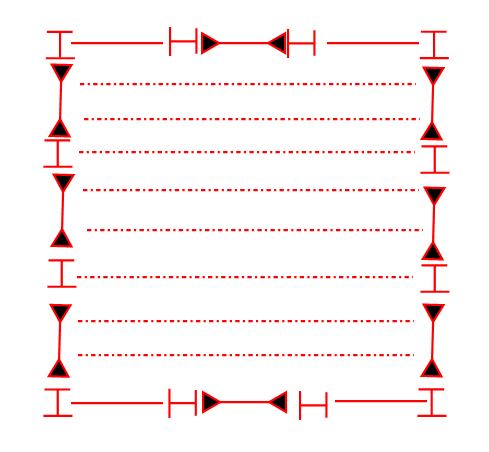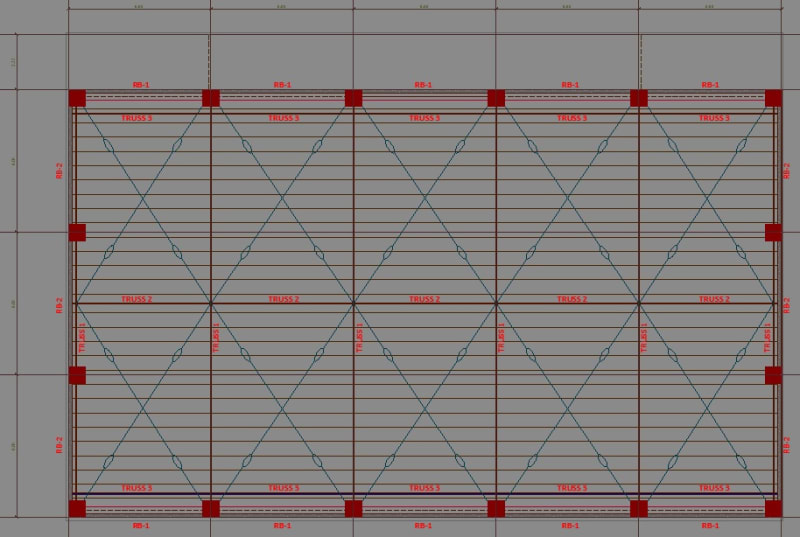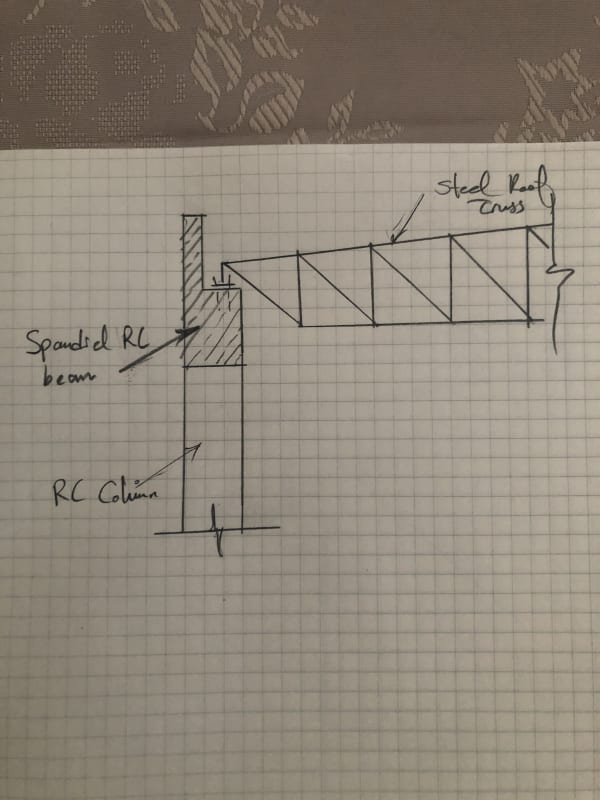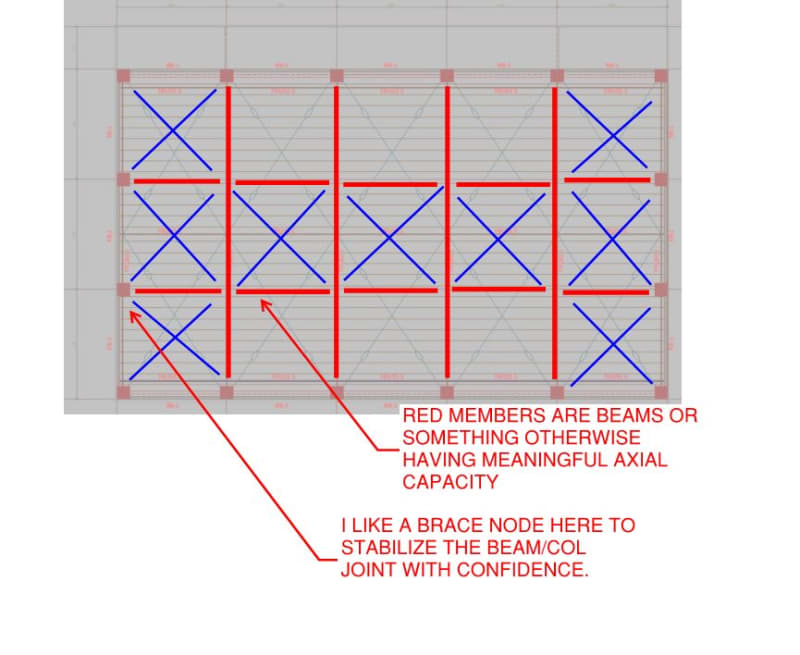Ratsvein
Structural
- Mar 3, 2019
- 10
Hi, I am designing a three story building. with the ground floor as a parking area, second floor as an office, and third floor as a gymnasium/court. The building will be designed as a Special moment concrete frame. The columns up to the third floor frame will have beams in both orthogonal direction, however since the gymnasium/court needs to have an open space, all interior columns is discontinued at the third floor framing and only the exterior columns will continue to support the steel trusses of the roof. The said exterior columns are then connected to beams in one orthogonal direction only. My question is do I have to design the top columns as a cantilevered columns (R = 2.2) and the lower floors as SMRF (R=8.0) when using ELF method or just design the entire structure with R = 8.0? Thanks!




